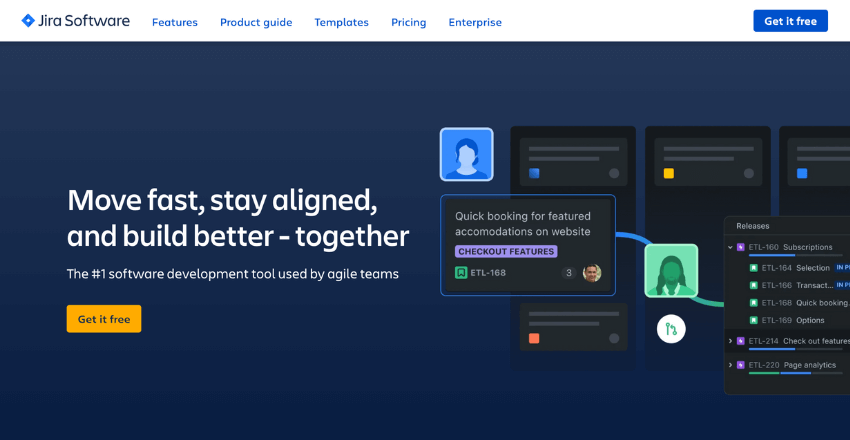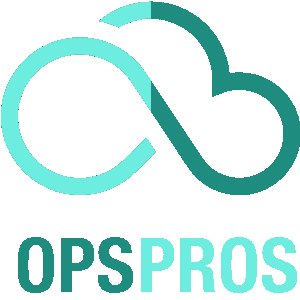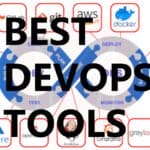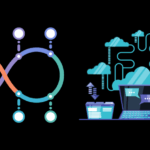Ever felt like you’re juggling flaming swords while riding a unicycle? That’s what managing continuous deployment across multiple cloud platforms can feel like for developers. Multi-cloud strategies promise flexibility and resilience, but they also introduce a host of challenges that can turn a developer’s day into a whirlwind of complexity.
The Challenge of Diverse Environments
Imagine trying to bake a cake using three different ovens, each with its own temperature controls, baking times, and quirks. One oven might be gas, another electric, and the third a convection oven.
You’d have to adjust each recipe, monitor the baking process closely, and hope they all turn out perfectly at the same time. That’s akin to deploying applications across multiple cloud platforms like AWS, Azure, and Google Cloud. Each cloud provider has its unique environment, APIs, and services, making it tough to maintain consistent deployment processes.
Let’s break this down further:
API Disparities: AWS, Azure, and Google Cloud each offer distinct APIs for similar services. For example, AWS’s S3 differs significantly from Azure’s Blob Storage and Google Cloud Storage, even though they serve the same purpose. A developer must understand these differences and write specific code for each environment, increasing the complexity and room for error.
Service Variations: While all three cloud platforms offer compute, storage, and networking services, the way these services are configured and managed can vary greatly. AWS Lambda, Azure Functions, and Google Cloud Functions are all serverless computing options, but they have different deployment methods, scaling options, and limitations.
Configuration Management: Each cloud provider has its own set of tools for configuration management and infrastructure as code. AWS uses CloudFormation, Azure has ARM templates, and Google Cloud provides Deployment Manager. Learning and managing these different tools can be overwhelming and time-consuming for development teams.
Operational Differences: Monitoring, logging, and debugging also differ across platforms. AWS CloudWatch, Azure Monitor, and Google Cloud Operations provide similar functionalities but require different setups and offer different insights.
Solution: Unified Tooling and Automation
To tackle this, adopt tools that support multi-cloud deployments. Platforms like Terraform and Kubernetes offer a unified approach to managing resources across different clouds.
Terraform: This infrastructure as code tool by HashiCorp allows developers to define both cloud and on-prem resources in human-readable configuration files that can be versioned, shared, and reused.

Terraform abstracts the underlying cloud APIs, providing a consistent command-line interface to manage different environments. For example, a single Terraform configuration file can manage AWS EC2 instances, Azure VMs, and Google Compute Engine VMs seamlessly.
Example: Instead of writing separate scripts for each cloud’s virtual machine provisioning, a developer can write one Terraform configuration file:
provider "aws" {
region = "us-west-2"
}
provider "azurerm" {
features {}
}
provider "google" {
project = "my-gcp-project"
region = "us-central1"
}
resource "aws_instance" "example" {
ami = "ami-0c55b159cbfafe1f0"
instance_type = "t2.micro"
}
resource "azurerm_virtual_machine" "example" {
name = "example-vm"
location = "East US"
resource_group_name = "example-resources"
network_interface_ids = [azurerm_network_interface.example.id]
vm_size = "Standard_DS1_v2"
}
resource "google_compute_instance" "example" {
name = "example-instance"
machine_type = "f1-micro"
zone = "us-central1-a"
boot_disk {
initialize_params {
image = "debian-cloud/debian-9"
}
}
network_interface {
network = "default"
access_config {
}
}
}Kubernetes: This open-source container orchestration platform manages containerized applications across multiple hosts and provides basic mechanisms for deployment, maintenance, and scaling of applications. Kubernetes can be deployed on any cloud platform, offering a consistent deployment environment.

Example: A development team can deploy a microservices application using Kubernetes with the same YAML configuration files regardless of the underlying cloud provider. By using Kubernetes, they abstract away the differences in how each cloud provider handles container orchestration:
apiVersion: apps/v1
kind: Deployment
metadata:
name: my-app
spec:
replicas: 3
selector:
matchLabels:
app: my-app
template:
metadata:
labels:
app: my-app
spec:
containers:
- name: my-app-container
image: my-app-image:latest
ports:
- containerPort: 80Automating deployment scripts and using unified tooling, developers can ensure consistency, reduce human error, and save precious time. This approach not only simplifies the management of diverse environments but also empowers teams to focus on innovation rather than wrestling with the intricacies of each cloud provider.
Security and Compliance Headaches
Maintaining security and compliance across different clouds is like trying to secure multiple fortresses with a single key. Each cloud provider has distinct security features, compliance standards, and management interfaces, complicating the task of keeping everything secure and compliant.
Different Security Models: AWS, Azure, and Google Cloud each have their own security models. AWS uses Identity and Access Management (IAM), Azure has Azure Active Directory (AAD), and Google Cloud uses Cloud Identity.

These models, while similar in purpose, differ in implementation. A developer must navigate different interfaces, policies, and best practices to manage user access and permissions across these platforms.
Compliance Standards: Each cloud provider supports various compliance certifications like HIPAA, GDPR, and ISO/IEC 27001, but they don’t always align perfectly. Ensuring compliance across multiple clouds requires a deep understanding of how each platform handles data sovereignty, privacy, and security controls. This can be overwhelming and time-consuming.
Varying Management Interfaces: The management interfaces for security controls and configurations are different for each cloud provider. AWS’s security services like GuardDuty and Inspector, Azure’s Security Center, and Google’s Security Command Center all require separate setups and management, leading to potential gaps and inconsistencies in security posture.
Data Encryption and Secrets Management: Encrypting data and managing secrets across multiple clouds is another significant challenge. AWS KMS, Azure Key Vault, and Google Cloud KMS all have different mechanisms and APIs for encryption and secret management, increasing the complexity of maintaining a unified security strategy.
Solution: Centralized Security Management
To tackle these challenges, invest in centralized security management tools that provide a single pane of glass view into your security posture across all clouds. Here’s how to implement this effectively:
HashiCorp Vault: Vault is a tool for securely accessing secrets such as API keys, passwords, and certificates. It can be integrated with multiple cloud providers, offering a consistent approach to managing secrets across different environments.
Example: Instead of manually configuring secret management for each cloud, a developer can use Vault to centrally manage secrets. For instance, setting up Vault with AWS, Azure, and Google Cloud might look like this:
Enable AWS secrets engine
vault secrets enable -path=aws aws vault write aws/config/root \ access_key= \ secret_key= \ region=us-west-2
Enable Azure secrets engine
vault secrets enable -path=azure azure vault write azure/config \ subscription_id= \ tenant_id= \ client_id= \ client_secret=
Enable GCP secrets engine
vault secrets enable -path=gcp gcp vault write gcp/config credentials=@Using the Vault, you centralize the management of secrets and ensure that sensitive data is protected consistently across all cloud platforms.
Cloud-Native Security Platforms: Tools like Palo Alto Networks’ Prisma Cloud and Lacework offer comprehensive security and compliance management for multi-cloud environments. These platforms provide visibility, threat detection, and compliance monitoring across different clouds from a single interface.
Example: Prisma Cloud can be configured to monitor security posture across AWS, Azure, and Google Cloud. It can automatically detect misconfigurations, ensure compliance with industry standards, and provide actionable insights. A developer can set up Prisma Cloud to monitor policies like this:
cloud:
aws:
policies:
- name: "Ensure S3 Buckets are Encrypted"
compliance: "CIS AWS Foundations Benchmark v1.2.0"
enforcement: "mandatory"
account: "my-aws-account"
azure: policies:
- name: "Ensure SQL Databases are Encrypted"
compliance: "Azure Security Benchmark v1.0"
enforcement: "mandatory"
account: "my-azure-account"
gcp: policies:
- name: "Ensure GCS Buckets are Encrypted"
compliance: "CIS GCP Foundations Benchmark v1.0.0"
enforcement: "mandatory"
account: "my-gcp-account"This configuration ensures that security policies are uniformly enforced across all cloud environments, simplifying compliance management.
Unified Security Operations: Implementing a unified security operations center (SOC) can provide centralized monitoring and management of security events. Using tools like Splunk or Elastic Security, you can aggregate logs and security data from multiple clouds into a single dashboard.
Example: By integrating log data from AWS CloudTrail, Azure Monitor, and Google Cloud Logging into Splunk, a developer can create a comprehensive view of security events:
Configure Splunk to collect logs from AWS CloudTrail
[aws_cloudtrail] index = cloud_security sourcetype = aws:cloudtrail interval = 60 start_by_shell = true
Configure Splunk to collect logs from Azure Monitor
[azure_monitor] index = cloud_security sourcetype = azure:monitor interval = 60 start_by_shell = true
Configure Splunk to collect logs from Google Cloud Logging
[google_logging] index = cloud_security sourcetype = google:logging interval = 60 start_by_shell = true With a centralized SOC, security teams can quickly detect and respond to threats across all cloud environments, improving overall security posture.Adopting a centralized security management tools, you can simplify the daunting task of securing multi-cloud environments. This approach not only ensures consistent security practices but also enhances compliance, reduces the risk of breaches, and saves valuable time and resources.
Data Integration and Consistency
Picture trying to have a smooth conversation with friends over a patchy phone line. You say something, and half of it gets lost in static or delays. That’s the challenge of ensuring data consistency across multiple clouds. Data synchronization, latency issues, and varying storage solutions can lead to inconsistent application performance and user experience. Here’s a deeper look into these challenges:
Data Synchronization: Synchronizing data across AWS, Azure, and Google Cloud can be tricky due to differences in how each platform handles data replication and transfer.

This can result in delays and inconsistencies, making real-time data analysis and application performance unreliable.
Latency Issues: Different cloud regions and data centers mean varying latency levels. Data moving between AWS in Virginia, Azure in Europe, and Google Cloud in Asia can experience significant delays, affecting applications that rely on real-time data processing.
Storage Solutions: Each cloud provider offers unique storage solutions with distinct features and APIs. AWS S3, Azure Blob Storage, and Google Cloud Storage all have different capabilities and limitations. Ensuring that data remains consistent across these platforms can be a daunting task, especially when dealing with large datasets.
Solution: Data Fabric and Synchronization Tools
To tackle these challenges, employ data fabric solutions that seamlessly connect data across multiple clouds. Technologies like Apache Kafka or cloud-native data integration services ensure real-time data synchronization and consistency. Additionally, implementing robust data validation and monitoring mechanisms helps catch and rectify inconsistencies promptly.
Apache Kafka: Kafka is a distributed streaming platform capable of handling trillions of events a day. It acts as a real-time data pipeline that collects, processes, and moves data between different cloud environments.
Example: Suppose you have an e-commerce application running on multiple clouds to ensure high availability and redundancy. You can use Kafka to stream order data in real-time across AWS, Azure, and Google Cloud. Here’s a simplified setup:
kafka:
topics:
orders:
partitions: 3
replication-factor: 3
brokers:
- aws.kafka-broker:9092
- azure.kafka-broker:9092
- gcp.kafka-broker:9092By using Kafka, you ensure that order data is synchronized in real-time across all cloud platforms, reducing latency and maintaining consistency.
Cloud-Native Data Integration Services: Services like AWS Database Migration Service (DMS), Azure Data Factory, and Google Cloud Dataflow can help integrate and synchronize data across multiple clouds.
Example: To synchronize a customer database between AWS and Azure, you could use AWS DMS to continuously replicate data changes from an Amazon RDS instance to an Azure SQL Database:
{
"SourceEndpoint": {
"EndpointIdentifier": "source-endpoint",
"EndpointType": "source",
"EngineName": "mysql",
"Username": "username",
"Password": "password",
"ServerName": "aws-rds-instance",
"Port": 3306
},
"TargetEndpoint": {
"EndpointIdentifier": "target-endpoint",
"EndpointType": "target",
"EngineName": "sqlserver",
"Username": "username",
"Password": "password",
"ServerName": "azure-sql-database",
"Port": 1433
},
"MigrationType": "cdc",
"TableMappings": {
"TableMap": [
{
"SourceSchema": "source-schema",
"TargetSchema": "target-schema",
"TableName": "customers",
"Action": "replicate"
}
]
}
}
This setup ensures that any changes in the customer data on AWS are replicated in real-time to the Azure SQL Database, maintaining consistency across clouds.
Data Validation and Monitoring: Implement robust data validation and monitoring mechanisms to ensure data consistency and catch discrepancies early. Tools like Datadog, Splunk, or custom monitoring solutions can be invaluable.
Example: Using Datadog to monitor data consistency across clouds, you can set up custom dashboards and alerts:
datadog:
monitors:
- type: metric
query: "avg:aws.rds.db_data_size{*} by {db_instance_identifier} > 100"
name: "AWS RDS Data Size Alert"
message: "Data size anomaly detected in AWS RDS instance"
tags: ["data", "consistency", "alert"]
- type: metric
query: "avg:azure.sql.data_size{*} by {database_name} > 100"
name: "Azure SQL Data Size Alert"
message: "Data size anomaly detected in Azure SQL Database"
tags: ["data", "consistency", "alert"]
- type: metric
query: "avg:gcp.sql.data_size{*} by {instance_id} > 100"
name: "Google Cloud SQL Data Size Alert"
message: "Data size anomaly detected in Google Cloud SQL instance"
tags: ["data", "consistency“, “alert”]
By setting up these alerts, you can quickly detect any data size anomalies that might indicate synchronization issues across your cloud environments.
Data Fabric Solutions: Employing data fabric solutions like IBM Cloud Pak for Data or NetApp’s Data Fabric helps seamlessly connect and manage data across multiple clouds, providing a unified view and control over data resources.
Example: Using IBM Cloud Pak for Data, you can create a virtualized view of your data spread across AWS, Azure, and Google Cloud. This allows you to run analytics and machine learning models on integrated data without worrying about where the data physically resides. Here’s how you might set it up:
ibm_cloud_pak_for_data:
data_virtualization:
connections: - type:
"AWS S3" credentials:
"aws_credentials" region:
"us-west-2" - type: "Azure Blob Storage" credentials:
"azure_credentials" region: "eastus" - type:
"Google Cloud Storage" credentials: "gcp_credentials" region:
"us-central1" data_catalog: enabled: true machine_learning:
enabled: trueThis setup provides a seamless integration layer, allowing you to access and manage data across different clouds as if it were in a single location.
Overcoming Data Integration and Consistency Challenges
By leveraging data fabric solutions, real-time synchronization tools, and robust monitoring mechanisms, you can overcome the challenges of maintaining data consistency across multiple clouds. These strategies ensure that your applications perform reliably and your users have a seamless experience, regardless of the underlying cloud infrastructure.
Navigating the complexities of multi-cloud data integration may seem daunting, but with the right tools and approaches, you can turn potential pitfalls into strategic advantages.
Cost Management
Managing costs in a multi-cloud environment can feel like trying to track spending across several credit cards. Each cloud provider has its own pricing models, billing practices, and hidden costs, which can quickly escalate if not monitored closely.
Different Pricing Models: AWS, Azure, and Google Cloud each have unique pricing structures for their services. For instance, compute costs on AWS are based on instance type and usage hours, Azure charges per minute, and Google Cloud uses sustained use discounts. This makes it difficult to compare costs directly and manage budgets effectively.
Billing Practices: Each cloud provider generates invoices differently. AWS bills monthly with detailed line items for each service used, Azure provides a daily breakdown, and Google Cloud offers billing based on project usage. Keeping track of these different formats can be a headache, especially when trying to reconcile costs across platforms.
Hidden Costs: There are often hidden costs that are not immediately apparent, such as data transfer fees, storage costs, and charges for additional services like monitoring and support. These can add up quickly and lead to budget overruns if not closely monitored.
Solution: Cost Management Platforms
To tackle these challenges, leverage cost management platforms that offer insights and optimization suggestions across all your cloud environments. Tools like CloudHealth or AWS Cost Explorer can help you monitor spending, predict costs, and optimize resource allocation to avoid unexpected bills.
CloudHealth: CloudHealth by VMware is a multi-cloud management platform that provides comprehensive cost management and optimization capabilities.

It aggregates data from AWS, Azure, and Google Cloud to give you a unified view of your cloud expenses.
Example: Using CloudHealth, you can set up custom policies to manage costs effectively. Suppose you want to monitor and optimize the cost of your development and production environments:
cloudhealth:
policies:
- name: "Development Environment Cost Optimization"
criteria:
environment: "development"
monthly_budget: 5000
actions:
- notify: "email@example.com"
- optimize: true
- name: "Production Environment Cost Monitoring"
criteria:
environment: "production"
monthly_budget: 20000
actions:
- notify: "email@example.com"
- generate_report: trueBy setting these policies, CloudHealth can alert you when costs exceed your budget and provide optimization recommendations to reduce expenses.
AWS Cost Explorer: AWS Cost Explorer is a tool that allows you to visualize and manage your AWS costs and usage over time. It provides detailed insights into your spending patterns and helps you identify areas where you can save money.
Example: Suppose you want to analyze your AWS spending and identify opportunities for savings. You can use AWS Cost Explorer to create custom reports:
import boto3
client = boto3.client('ce')
response = client.get_cost_and_usage(
TimePeriod={
'Start': '2023-01-01',
'End': '2023-06-30'
},
Granularity='MONTHLY',
Metrics=[
'BlendedCost',
],
GroupBy=[
{
'Type': 'DIMENSION',
'Key': 'SERVICE'
},
],
)
print(response)This script retrieves and prints a report of your monthly AWS costs grouped by service, allowing you to see which services are driving your expenses and where you can cut costs.
Google Cloud’s Cost Management Tools: Google Cloud offers tools like Cloud Billing Reports and Cost Table Reports to help you track and manage your cloud spending. These tools provide detailed insights into your usage and costs, allowing you to identify trends and optimize resource allocation.
Example: Using Google Cloud Billing Reports, you can set up alerts to monitor your spending:
gcp_billing_alerts:
budgets:
- name: "Project Budget"
amount: 10000
alert_thresholds: [50, 75, 90, 100]
email_notifications: ["admin@example.com"]This configuration ensures you receive email notifications when your project spending reaches 50%, 75%, 90%, and 100% of your budget, helping you stay on top of your costs.
Azure Cost Management and Billing: Azure provides tools like Cost Management + Billing to help you track, analyze, and optimize your Azure spending. You can create budgets, set spending thresholds, and get recommendations for cost savings.
Example: Using Azure Cost Management, you can create a budget and set alerts for your Azure resources:
azure_cost_management:
budget:
name: "Monthly Budget"
amount: 15000
start_date: "2023-01-01"
end_date: "2023-12-31"
alerts:
- threshold: 80
email: "finance@example.com"
- threshold: 100
email: "ops@example.com"This setup helps you monitor your Azure spending and receive alerts when you approach or exceed your budget.
Overcoming Cost Management Challenges
These cost management platforms, you can gain better control over your multi-cloud spending. These tools provide valuable insights into your costs, help predict future expenses, and offer optimization suggestions to reduce waste. Implementing these strategies ensures you stay within budget and maximize the value of your cloud investments.
Skill Gaps and Team Collaboration
Not every developer is a cloud polyglot. The diverse skill sets required to manage different cloud environments can create silos within teams, hampering collaboration and efficiency. Here’s a closer look at these challenges:
Diverse Skill Sets: Each cloud platform—AWS, Azure, and Google Cloud—requires specific knowledge and expertise. A developer proficient in AWS may not be as effective in Azure or Google Cloud, leading to fragmented skills within the team. This specialization can create bottlenecks when team members need to collaborate on multi-cloud projects.
Silos within Teams: When teams are divided by their cloud expertise, it can lead to silos where information and knowledge are not shared effectively. This lack of communication and collaboration can slow down project timelines and reduce overall team productivity.
Inefficiency in Problem-Solving: Without a unified understanding of different cloud platforms, teams may struggle to troubleshoot issues that span multiple environments. This can lead to longer resolution times and increased frustration among team members.
Solution: Cross-Training and Collaboration Tools
To overcome these challenges, invest in cross-training your team to build multi-cloud expertise. Encourage the use of collaboration tools like Slack, Microsoft Teams, and Jira to foster communication and streamline workflows. Creating a culture of knowledge sharing and continuous learning can significantly bridge skill gaps and enhance team collaboration.
Cross-Training Programs: Develop comprehensive cross-training programs to upskill your team. This involves structured training sessions, hands-on workshops, and certification courses for each cloud platform.
Example: Suppose you have a team of developers who are experts in AWS but need to work on a project involving Azure and Google Cloud. You can set up a cross-training program as follows:
Multi-Cloud Cross-Training Program
Week 1: Introduction to Azure
- Day 1: Overview of Azure services and architecture
- Day 2: Hands-on labs with Azure Virtual Machines and Storage
- Day 3: Azure Networking and Security fundamentals
- Day 4: Azure DevOps and CI/CD pipelines
- Day 5: Q&A and practical exercises
Week 2: Introduction to Google Cloud
- Day 1: Overview of Google Cloud services and architecture
- Day 2: Hands-on labs with Google Compute Engine and Storage
- Day 3: Google Cloud Networking and Security fundamentals
- Day 4: Google Kubernetes Engine (GKE) and container orchestration
- Day 5: Q&A and practical exercises
Week 3: Multi-Cloud Integration
- Day 1: Strategies for integrating AWS, Azure, and Google Cloud
- Day 2: Real-world use cases and best practices
- Day 3: Multi-cloud monitoring and cost management
- Day 4: Project work – Implementing a multi-cloud solution
- Day 5: Presentation and feedback session
Collaboration Tools: Encourage the use of collaboration tools to improve communication and streamline workflows. Platforms like Slack, Microsoft Teams, and Jira can help keep everyone on the same page.
Example: To enhance collaboration, set up dedicated channels and boards for multi-cloud projects in Slack and Jira:
Slack Channels

- #multi-cloud-project: General discussion and updates on multi-cloud initiatives
- #aws-azure-integration: Focused discussions on AWS and Azure integration tasks
- #gcp-support: Channel for Google Cloud-related queries and support
Jira Boards

- Multi-Cloud Project Board: Centralized board for tracking tasks, sprints, and milestones across cloud environments
- AWS Tasks: Board for managing AWS-specific tasks and issues
- Azure Tasks: Board for managing Azure-specific tasks and issues
- Google Cloud Tasks: Board for managing Google Cloud-specific tasks and issues
Knowledge Sharing Culture: Foster a culture of continuous learning and knowledge sharing within your team. Regularly scheduled knowledge-sharing sessions, brown-bag lunches, and cloud study groups can help disseminate information and build a more cohesive team.
Example: Organize weekly knowledge-sharing sessions where team members present on different topics related to multi-cloud environments:
Weekly Knowledge Sharing Sessions
Week 1: Best Practices for AWS IAM Policies Presenter: Alice
Week 2: Securing Azure Virtual Networks Presenter: Bob
Week 3: Optimizing Costs in Google Cloud Presenter: Carol
Week 4: Multi-Cloud CI/CD Pipelines Presenter: Dave
Week 5: Troubleshooting Common Multi-Cloud Issues Presenter: Eve
Wrapping up Multi-Cloud Hurdles
Navigating the complexities of multi-cloud continuous deployment is challenging but far from insurmountable. Adopting unified tools, centralizing security management, ensuring data consistency, managing costs effectively, and fostering a collaborative team culture, you can turn multi-cloud from a daunting task into a strategic advantage.
External Sources
https://tanzu.vmware.com/cloudhealth
Noah is an accomplished technical author specializing in Operations and DevOps, driven by a passion ignited during his tenure at eBay in 2000. With over two decades of experience, Noah shares his transformative knowledge and insights with the community.
Residing in a charming London townhouse, he finds inspiration in the vibrant energy of the city. From his cozy writing den, overlooking bustling streets, Noah immerses himself in the evolving landscape of software development, operations, and technology. Noah’s impressive professional journey includes key roles at IBM and Microsoft, enriching his understanding of software development and operations.
Driven by insatiable curiosity, Noah stays at the forefront of technological advancements, exploring emerging trends in Operations and DevOps. Through engaging publications, he empowers professionals to navigate the complexities of development operations with confidence.
With experience, passion, and a commitment to excellence, Noah is a trusted voice in the Operations and DevOps community. Dedicated to unlocking the potential of this dynamic field, he inspires others to embrace its transformative power.







